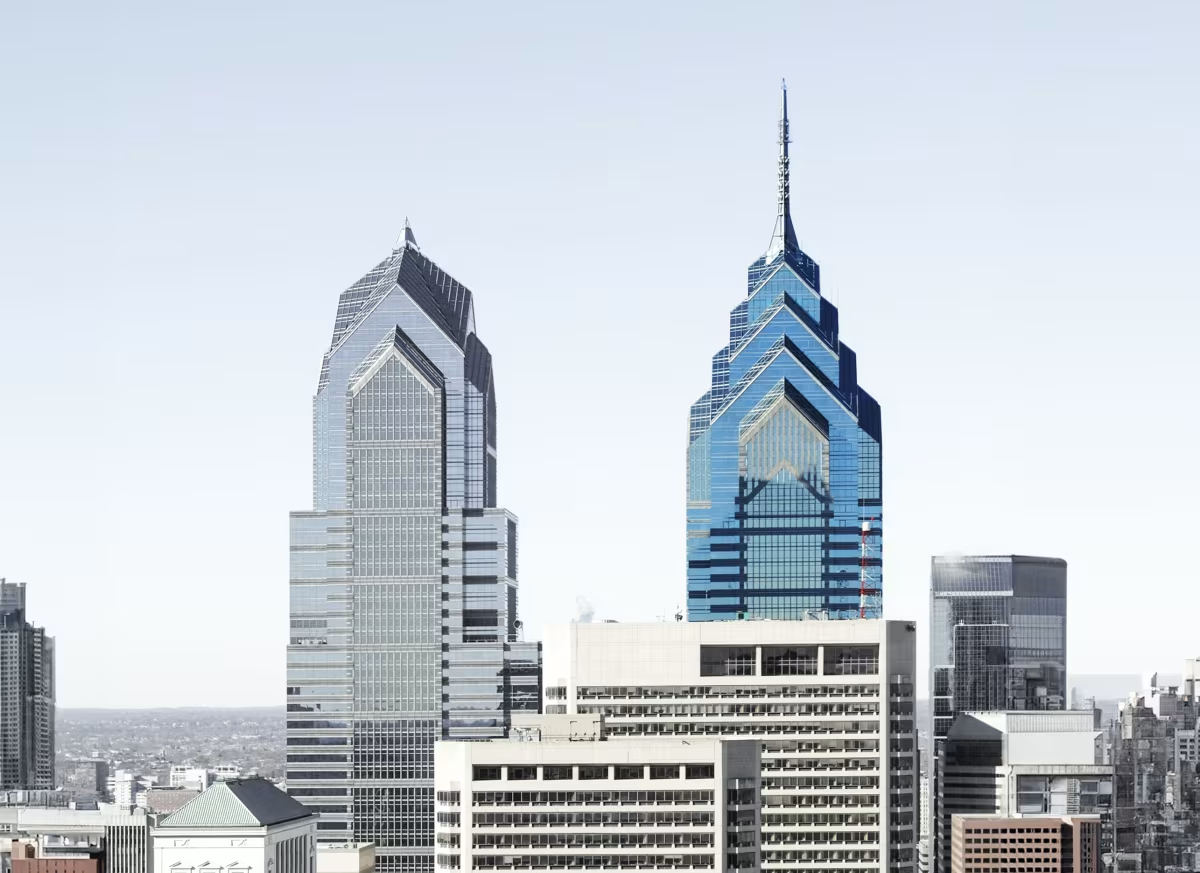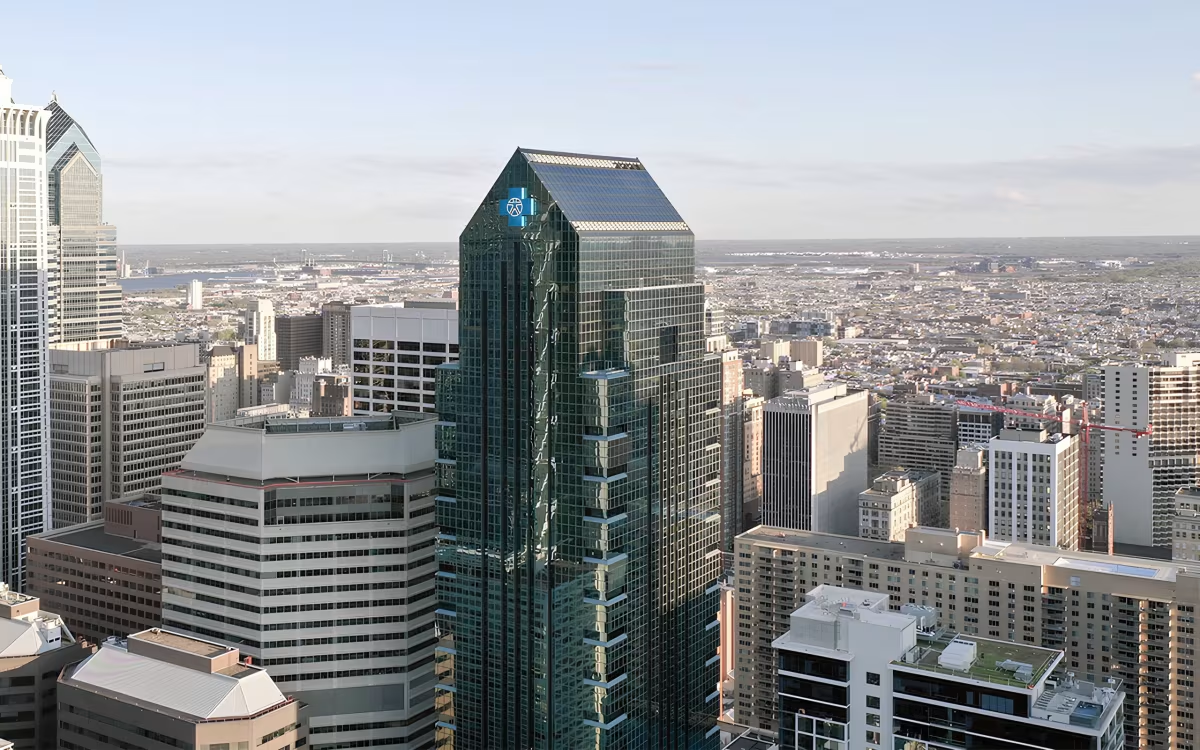One Liberty Place Building vs G. Fred DiBona Jr. Building


Comparing the One Liberty Place Building and the G. Fred DiBona Jr. Building is interesting because they both stand in Philadelphia, PA, and were completed within 3 years of each other, but they were designed by different architects.
This offers a unique glimpse at how rival designers approached projects in the same city during the same era.
Height & Size
These two towers present an interesting contrast in their proportions. The G. Fred DiBona Jr. Building rises higher at 564ft (172m), while the One Liberty Place Building reaches 0ft (m). However, the One Liberty Place Building accommodates more floors with 61 levels above ground, compared to 45 floors in the G. Fred DiBona Jr. Building.
This suggests different approaches to interior space design. The G. Fred DiBona Jr. Building has an average floor-to-floor height of approximately 3.8m, while the One Liberty Place Building has more compact floors averaging around 0m each. The taller building's more generous floor heights might indicate grander interior spaces, higher ceilings, or different programmatic requirements.
These different proportions likely reflect the specific needs each building was designed to serve, whether driven by zoning regulations, client requirements, or the intended use of the spaces within. The contrast shows how architects can achieve different spatial experiences even when working with similar overall building scales.
Architectural Style
Both the One Liberty Place Building and the G. Fred DiBona Jr. Building were designed in line with the aesthetic conventions of the Postmodernism style.
At the time, this style was at the height of its popularity. So both Murphy/Jahn Architects and WZMH Architects followed what was in many ways expected of them, producing designs that fit comfortably within contemporary architectural norms, rather than breaking with convention.
Uses
Both the One Liberty Place Building and the G. Fred DiBona Jr. Building were designed to serve as commercial towers, and that has remained their main use since their completion, serving similar roles in the urban fabric.
The One Liberty Place Building also provides 779 parking spaces.
Structure & Facade
Both the One Liberty Place Building and the G. Fred DiBona Jr. Building rely on a Framed Tube In Tube structural system.
A tube-in-tube system combines a reinforced central core with a perimeter of columns connected by floor slabs. This arrangement creates a stiff structure that resists both vertical and lateral forces efficiently.
They also employ the same type of facade, a Curtain Wall facade.
A curtain wall is a non-load-bearing facade hung from the structural frame. It is anchored to floor slabs and transfers only its own weight and wind loads, allowing for sleek, glassy exteriors.
| One Liberty Place Building | G. Fred DiBona Jr. Building | |
|---|---|---|
| Murphy/Jahn Architects | Architect | WZMH Architects |
| 1985 | Construction Started | 1988 |
| 1987 | Year Completed | 1990 |
| Postmodernism | Architectural Style | Postmodernism |
| Commercial | Current Use | Commercial |
| 61 | Floors Above Ground | 45 |
| 288 | Tip Height | 190 |
| 111,483 m² | Usable Area (m²) | 70,700 m² |
| Framed Tube In Tube | Structure Type | Framed Tube In Tube |
| Steel | Vertical Structure Material | Steel |
| Concrete | Horizontal Structure Material | Concrete And Steel |
| No | Facade Structural? | No |
| Glass, Steel | Main Facade Material | Glass |
| Lev Zetlin Associates | Structural Engineer | Severud Associates Consulting Engineers |
| PA | State | PA |
| Philadelphia | City | Philadelphia |
| 1650 Market Street | Address | 1901 Market Street |